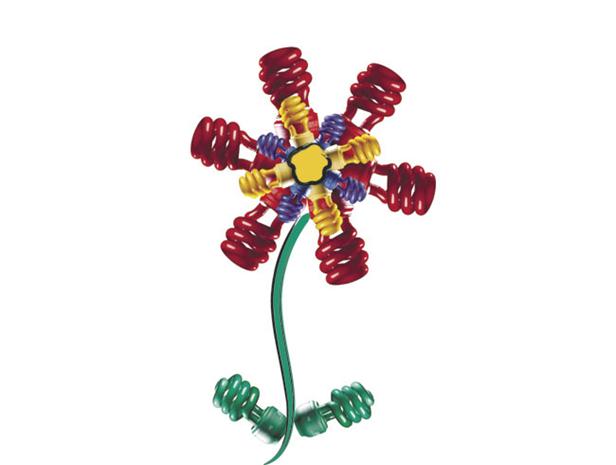As has widely been reported, a recent study highlights the problem of UV radiation from compact fluorescent bulbs, albeit only at close quarters.
It is therefore recommended that the squiggly tubes are enclosed in capsules for such use, as with the pear shaped CFLs that are available.
From the Daily Mail article 20 July Edited extracts, highlights
Energy-saving light bulbs can fry your skin, study claims
Energy-saving light bulbs can fry your skin, a new study claims.
Researchers at Stony Brook University in New York State examined the impact of the compact fluorescent bulbs – or CFL bulbs – on human skin cells prompted by a similar study undertaken in Europe.
They discovered that healthy skin exposed to light from the CFLs experienced damage found with ultraviolet (UV) radiation.
‘Consumers should be careful when using compact fluorescent light bulbs… our research shows that it is best to avoid using them at close distances and that they are safest when placed behind an additional glass cover’ Stony Brook University Professor of Materials Science and Engineering Miriam Rafailovich said.
The scientists tested a number of CFL bulbs from across New York State to determine their UV emissions and the integrity of each bulb’s phosphor coatings.
Results revealed significant levels of UV, which appeared to originate from cracks in the phosphor coatings that were present in all CFL bulbs studied.
They also tested the impact on collagen-producing skin cells and the epidermal cell that generated keratin from the light.
Comparing skin cells exposed to the CFLs with those exposed to incandescent light bulbs, they discovered that only the CFLs damaged skin, the same trauma as sun burnt skin, they found. Incandescent light of the same intensity had no effect on healthy skin cells at all.
The study itself:
The Effects of UV Emission from Compact Fluorescent Light Exposure on
Human Dermal Fibroblasts and Keratinocytes
Tatsiana Mironava, Michael Hadjiargyrou, Marcia Simon, Miriam H. Rafailovich
Article first published online: 20 jul 2012
Abstract
Compact fluorescent light (CFL) bulbs can provide the same amount of lumens as incandescent light bulbs, using one quarter of the energy.
Recently, CFL exposure was found to exacerbate existing skin conditions; however, the effects of CFL exposure on healthy skin tissue have not been thoroughly investigated.
In this study, we studied the effects of exposure to CFL illumination on healthy human skin tissue cells (fibroblasts and keratinocytes).
Cells exposed to CFLs exhibited a decrease in the proliferation rate, a significant increase in the production of reactive oxygen species, and a decrease in their ability to contract collagen.
Measurements of UV emissions from these bulbs found significant levels of UVC and UVA (mercury [Hg]
emission lines), which appeared to originate from cracks in the phosphor coatings, present in all bulbs studied.
The response of the cells to the CFLs was consistent with damage from UV radiation, which was further enhanced when low dosages of TiO2 nanoparticles (NPs), normally used for UV absorption, were added prior to exposure.
No effect on cells, with or without TiO2 NPs, was observed when they were exposed to incandescent light of the same intensity.
Scotland based lighting designer Kevan Shaw of Savethebulb.org has a particular interest on the effects of CFLs on people with light sensitivity disorders, as he points out in the introduction to his post on this research, extracts:
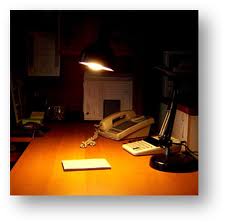
Frying tonight?
As previously blogged I am assisting the Spectrum Alliance with their campaign to retain incandescent lamps for people with specific photosensitive disorders.
In the course of this I have learned a lot about skin problems caused by CFLs. It seems that such problems are not just confined to specifically photosensitive people. The Daily Mail ran an article on 20 July this year following up on recently published research in the USA. It seems that the light from CFLs has a significantly greater damaging effect on skin than incandescent lamps.
As previously experienced, CFLs do emit UV despite the claims of manufacturers.
Double envelope CFLs do reduce UV emissions considerably and should be used in any situation where lamps are at all close to people like task lighting, table lamps and bedside lights, particularly for the very young and very old whose skin tends to be more sensitive.
Kevan Shaw July 20 , 2012
Comment
Some comments elsewhere are taking this quite lightly, even welcoming a bit of sunburn and vitamin D formation.
However, an important point not mentioned is that UVC, one of the UV types emitted, is the most damaging UV source and happens to be blocked by the atmosphere ozone layer when coming from the sun.
An interesting runthrough of UV light can be seen on Digplanet.com, here.
The same source on Fluorescent lamp UV radiation
Fluorescent lamps
Fluorescent lamps produce UV radiation by ionising low-pressure mercury vapour. A phosphorescent coating on the inside of the tubes absorbs the UV and converts it to visible light.
The main mercury emission wavelength is in the UVC range. Unshielded exposure of the skin or eyes to mercury arc lamps that do not have a conversion phosphor is quite dangerous.
The light from a mercury lamp is predominantly at discrete wavelengths. Other practical UV sources with more continuous emission spectra include xenon arc lamps (commonly used as sunlight simulators), deuterium arc lamps, mercury-xenon arc lamps, metal-halide arc lamps, and tungsten-halogen incandescent lamps.
Incandescents have a red shift and relatively low UV output
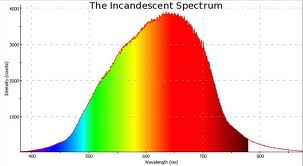
unknown source
CFL lamp spectrum
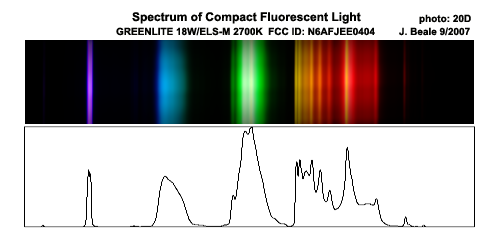
A comparison between light sources
(a CFL is of course a type of mercury vapor lamp)
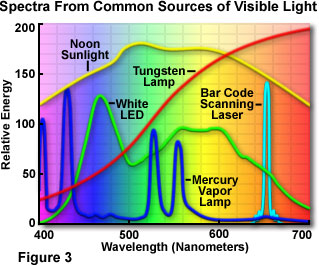
The sourced Olympusmicro.com site for the last diagram has a good account of lamp technologies and spectra.
As for the issue at hand here,
there is more coverage of UV radiation and other health concerns, with research references, on http://ceolas.net/#li18rx
Note that the double envelope CFL recommendation dates back several years from other studies…
BBC article 9 October 2008:
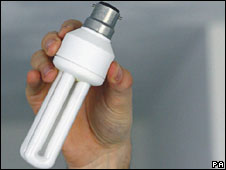
UV light fear over ‘green’ bulbs
Being too close to energy-saving light bulbs could cause skin reddening because of ultraviolet light emissions, health experts have warned.
The Health Protection Agency (HPA) cautions against being closer than 30cm (1ft) to some compact fluorescent (cfl) bulbs for long.
As a result of testing which revealed the potentially high levels of UV light, the HPA has issued guidelines against people using unencapsulated light bulbs – where the light coil is visible – closer than 30cms to the body for more than one hour a day.
Professor Harry Moseley, Consultant Clinical Scientist at the University of Dundee, said: “We are concerned about risks to patients who have severe light-sensitive skin disorders.
“The small levels of ultra-violet emitted by some low energy light bulbs could be harmful to these patients. I recommend use of lights with a protective shield to absorb the UV.”
Experts stress that healthy people are at no risk providing the HPAs advice (above) is followed.
Also a similar EU Commission study 2008, albeit a typically poorly written EU report, seemingly drawing on other studies, and full of conclusions without presenting underlying data evidence (surprise, not).
In December 2009 The Canadian Federal Government Health Department finished a review of CFLs, again mainly relating to UV radiation, but other electromagnetic radiation was also studied.
The report mirrored the UK HPA findings:
“It is recommended that single envelope CFLs [classic tubular type lights] not be used at distances less than 30 cm to avoid any long-term health effects in the general population”
Note a certain irony here…
Double envelope CFLs protecting from UV light also means reducing their ordinary light output still more
There is other irony about CFLs already, eg leave them on, waste energy, switch them on-off, shorten their life…
Basically, bulbs are the wrong format for fluorescent lighting technology, best in long tube form, just like LEDs have natural lighting advantages in sheet form.
The CFL and LED natural advantages are compromised in offering politically pushed incandescent-copying lighting.


 The lights disrupted other electrical products. Only one in five LED lamps passed the test without comment.
The lights disrupted other electrical products. Only one in five LED lamps passed the test without comment.





